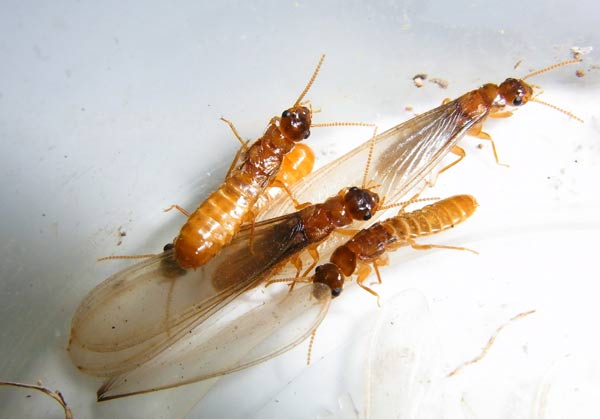Common Myths About Termites Debunked
Termites are among the most misunderstood pests in residential and commercial properties. Over the years, misconceptions about their behavior, damage potential, and treatment options have persisted, leading homeowners to make decisions based on false assumptions. The problem with these termite myths is that they often delay proper action, allowing infestations to grow unnoticed and damage to escalate.
From their feeding habits to how they spread, it’s essential to separate fact from fiction. In this article, we will address several of the most common misunderstandings about termites, explain why these beliefs are inaccurate, and highlight the correct information you need to protect your property.

Myth 1: Termites Only Target Old or Damaged Wood
One of the most widely believed termite myths is that these pests only infest old, rotting, or damaged wood. While it is true that moisture-damaged wood is easier for termites to consume, they are also capable of attacking perfectly sound and structurally intact timber.
- Moisture preference: Termites thrive in damp environments, but healthy wood can still be vulnerable if it offers a stable food source.
- Hidden attacks: Subterranean termites often enter through concealed areas such as crawl spaces or wall voids, making detection difficult until damage is severe.
- Broader risk: Even newly built homes are at risk if preventive measures are not taken during construction.
For more insights into how their life stages influence when they attack, see this overview on the life cycle of termites. Understanding the timing of infestations can help homeowners spot vulnerabilities earlier and schedule inspections at critical points in the year.
Myth 2: Termite Infestations Are Easy to Spot
Many people assume that termite activity will be obvious, perhaps by visibly damaged wood or swarms of insects. In reality, these pests are often silent invaders that can remain undetected for years.
- Concealed damage: Termites typically consume wood from the inside out, leaving the surface intact until structural integrity is compromised.
- Subtle signs: Mud tubes, discarded wings, or faint clicking sounds within walls are early indicators, but they are often overlooked.
- Professional detection: Specialized equipment and inspections are usually required to identify the extent of an infestation accurately.
Because termites work discreetly, relying on visible damage as the primary sign of infestation is a costly mistake. By the time surface damage is noticeable, significant structural harm may have already occurred, making early intervention even more important.
Myth 3: DIY Treatments Are Just as Effective as Professional Services
While store-bought sprays and baits may seem convenient, they often fail to address the root of the infestation. Termites live in large, complex colonies, and eliminating surface activity rarely impacts the core population.
- Limited reach: Many DIY products only target the insects you can see, not the nest hidden deep underground or within structural wood.
- Colony resilience: Termites can relocate within a property to avoid treated areas, continuing to feed elsewhere.
- Comprehensive solutions: Professional services use specialized tools, knowledge, and methods such as targeted foam treatment that penetrate voids and hard-to-reach spaces.
Even if a DIY method temporarily reduces activity, it often fails to eliminate the queen and the bulk of the colony. Without addressing these critical points, termites will eventually regroup and resume feeding.
Myth 4: One Treatment Is Enough to Eliminate Termites Forever
Another common misconception is that once termites are treated, they will never return. While effective treatment can eradicate an existing colony, it does not guarantee permanent protection.
- Environmental factors: Moisture issues, soil conditions, and nearby untreated properties can reintroduce termites.
- Ongoing risk: Without preventive maintenance, reinfestation is possible within months or years.
- Best practice: Combine treatment with regular inspections, moisture control, and barrier systems to maintain a termite-free environment.
Long-term termite management is a continuous process. Much like routine maintenance for plumbing or roofing, termite prevention requires ongoing care to stay effective. Scheduling follow-up inspections ensures that if a new activity emerges, it is dealt with before it becomes a serious problem.
Myth 5: Termites Serve No Purpose in Nature
Although their destructive potential in human structures is significant, termites do have an ecological role. In natural ecosystems, they break down cellulose in fallen trees and plant debris, recycling nutrients back into the soil.
- Decomposers: They accelerate the breakdown of organic matter, enriching soil fertility.
- Ecosystem balance: Termites help maintain healthy forests by clearing dead plant material.
- Human conflict: The problem arises when their natural behavior overlaps with human structures containing cellulose-based materials.
Recognizing their role in the environment is important, but it also highlights why pest control must be strategic. The goal is not to eradicate termites from nature entirely but to keep them from invading areas where they cause costly harm.
Protect Your Property with Accurate Knowledge
Misunderstanding termites can lead to costly mistakes and delayed action. By separating fact from fiction, you can take the right steps to prevent infestations and minimize damage. Staying informed about termite behavior, treatment methods, and prevention strategies will help you make decisions that safeguard your property for years to come.
For an expert evaluation and effective treatment plan, contact Elite1 Termite Control, Inc. and safeguard your home with proven strategies.

